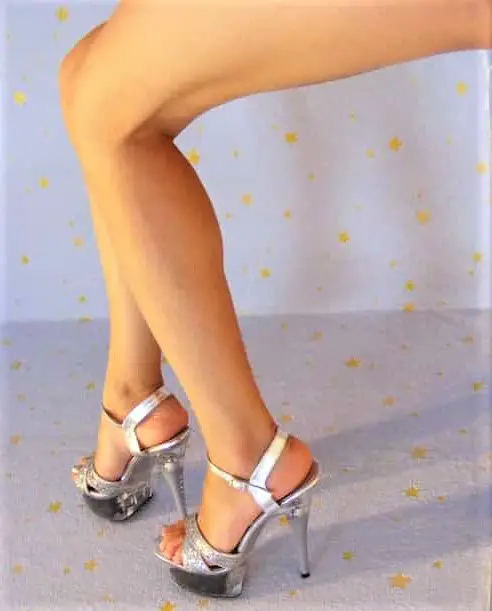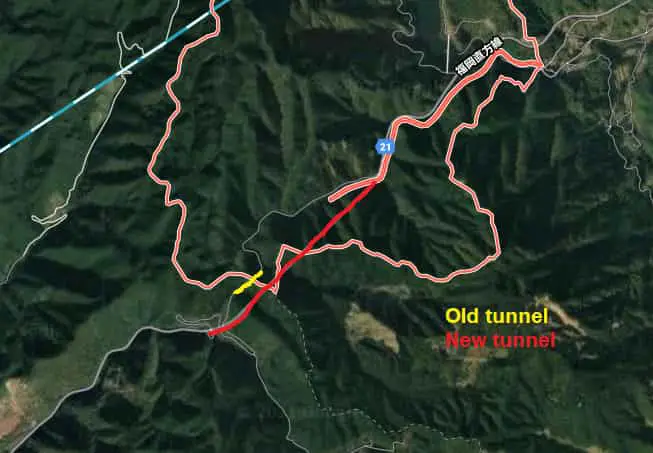The Origin of Karate
Did Karate originate from the Japanese island of Okinawa just as Mr. Miyagi claims in the film Karate Kid?
The Origin of Karate can be found as far back as the dawn of man.
Karate is actually not unique at all. Hand-to-hand combat has been practiced for at least 2500 years and probably much longer than that. The first weapons the first humans had were sticks, stones, rods, and other things they could find in nature, And when that wasn’t enough, they probably just used their hands and feet. It’s not strange to suppose that in the beginning, everybody used some sort of primitive martial art.
Later, soldiers and war-folks always tried to train and prepare for every kind of opponent as well as every kind of situation. The Roman and Greek soldiers trained with weapons, and they trained without weapons. The training techniques with weapons became the foundation for track and field… And hand-to-hand combat techniques became the foundation for a series of martial arts from Scandinavia to South Africa, from Japan to America. Kicking, throwing, punching, and holding is in no way unique to the east.
The seeds of modern Karate.
Japan stretches from northeast to southwest between the Russian Sakhalin Island and a point south of Korea. But the Empire of the rising sun doesn’t finish there. From Kyushu in the south, Japan continues almost all the way to Taiwan. These are the Ryūkyū Islands and of these Okinawa is the biggest.
The history of Okinawa goes back thousands of years. But let’s focus on the last six hundred of them. In 1429, Okinawa was unified as the Ryūkyū Kingdom. With a large and effective administration, little internal warfare, and a perfect geographic position right there on the border of the East China Sea, their Empire grew in importance. Through effective trade between China, Southeast Asia, Korea, and of course Japan they slowly became a lively, cultural melting pot. And it is in this context we should try to find the origin of karate.
The seed germinates…
Okinawa at the time had a very complex caste system. The Okinawans were born into their respective roles in society.
- There was the King and the King’s family.
- Below them, there were several noble classes and priests.
- Then came three levels of Pechin, the feudal warrior class. These were charged with enforcing the law and providing military defense to the nation, similar to the Japanese Samurai.
In 1477 a general weapon ban was issued by King Shō Shin. He also moved most of the local district rulers to the capital, Shuri. All this to eliminate any possibility of uprising or rebellion in the districts. The ban lasted for 50 years until the King’s death.
In 1609 the Shimazu family of the Satsuma-han (today’s Kagoshima prefecture) in southern Japan invaded and conquered Okinawa. From that point on, Okinawa has always been, in at least some way, a part of Japan. This was the time when a second weapon ban was introduced.
Although these bans weren’t total and didn’t include all sorts of weapons, they still had a big influence on the way the Okinawan warriors trained. They had to adapt to the new rules. So, they developed and elaborated various techniques to fight with bare hands Te (手)… And they formed the Kobudō (古武道), which is a collective term for battle techniques with various weapons that were not forbidden, like staffs, hooks, sticks, etc. The chain stick, Nunchaku, is a weapon in this category.
The old Okinawan masters generally practiced Karate and Kobudō together. These two branches were originally one as fighting with and without weapons was all a part of the general technique of warfare. They complete each other.
China and the origin of Karate.
Having close relations with all the surrounding countries, the Okinawans picked up useful skills from all of them. That included not only China but also other countries in the neighborhood.

It is sometimes described as if the origin of Karate was just Chinese Kung Fu, and the Okinawan Pechin just modified it.
The truth is that hand-to-hand fighting techniques were not at all unique for their particular origins or location, Chinese, Japanese, or otherwise. There were hundreds of various disciplines, and styles, and every corner of the landscape had its own schools and masters.
Having said that, it is true that China and Okinawa had a long history of mutual economical and cultural exchange.
After 1609 Okinawa still wasn’t yet fully Japanese. It was a Satsuma (Japanese) vassal state, and as such enjoyed quite a lot of independence. Interestingly it was also a Chinese tributary state.
China requested the tributary status to engage in trading relations. And as Japan didn’t have good relations with China, and as China straight out banned all economic transactions with Japan, Okinawa became the backdoor for anyone who wanted to exchange goods between the dominant powers of the region. It was a win-win situation for all. And it also allowed for China to continue dominating the cultural influence over the Ryūkyū islands.
Sakugawa Kanga.
Very little is known about this extraordinary master of Karate. He was born in the second half of the 18th century, probably in Akada Village outside the capital of the time, Shuri. He studied the traditional Okinawa hand-to-hand fighting technique, Te (手).

When he was in his thirties (.. or twenties.), he traveled to China, once or several times, and studied Chinese martial arts. Once home again, he started a school in Shuri where he taught his own merged variant of Te.
The name of his technique was Tōde Sakugawa.
- Sakugawa, well that part is obvious.
- Tōde is made up of two parts: De is the character for hand, Te (手) in Japanese.
- Tō is the character for Tang, as in the Chinese Tang dynasty. To (唐) in Japanese, but pronounced Kara as Karate (唐手) in this Kanji. The reason for calling the Chinese Tang was that Okinawa had made its first contact with the Chinese during the Tang dynasty. After that Tang (Tō) continued to be used for Chinese and Chinese goods in general… As well as “foreign” in general.
So, the translation would be Chinese Fist/Hand of Sakugawa.
Ancient Okinawan Te bears a resemblance to Chinese Kung Fu.
Now, let’s sail over to Japan
Over in Japan, big things were happening. In 1868 the last Tokugawa shogun had to resign, and that was the end of the Edo period in Japan’s history. After that, the country returned to imperialism with its 122nd Emperor, Meiji. In 1872 an imperial order abolished the feudal domains, and overnight most of the samurai found themselves without a job. From being the backbone of Japanese society, suddenly they were obsolete.
If you’ve seen the film The Last Samurai, you get the sort of general idea.
What followed was 15 years of brutal westernization. And in that process, the old ways of a feudal warrior didn’t fit in.
To that, we have to add, modern weapons… If you face rifles and canons, that could shoot you from hundreds of meters, the traditional battle techniques fall kind of short. Never bring a sword to a gunfight.
The result was a surplus of instructors, masters of ancient fighting techniques who nobody needed.
 The origin of Karate – Public entertainment.
The origin of Karate – Public entertainment.
So, everything had to be European or American. The old Japanese culture was looked upon with skepticism The only martial art that still was popular during this period was Sumo. Because Sumo wasn’t a martial art connected to warfare and the feudal Tokugawa period. It was a sport, an entertainment, more tied to Shinto performance. It didn’t suffer as much from the anti-domestic movement in the late 1800s.
Kendo
In 1873 Sakakibara Kenkichi, who himself was one of the Samurai, engaged in organizing traditional Japanese sword battles, Gekiken Kogyo. As real swords were too dangerous, as well as banned, they used training swords made of bamboo. And so, Kendo was born.
But even though I wasn’t supposed to write about Kendo, the birth of Kendo still has a lot to do with the origin of Karate. It was the first time one of the old battle techniques was used as entertainment rather than a way to kill your enemy in battle.
What Sakakibara Kenkichi did was to add a few very important details to his exhibitions, all borrowed from Sumo:
- He introduced Sudden Death, the possibility to win with one strike if it’s correctly done.
- He introduced an independent referee.
- And lastly, he introduced commentators whose job was to explain the various rules, strikes, and how they were carried out. That made it enjoyable to watch, even if you didn’t understand anything about the event.
Judo

In 1882 Jigoro Kano created another Japanese sport based on the old hand-to-hand fighting techniques. He called his sport Judo and added two more very important attributes that would become a great advantage for all the Budo – Modern Japanese martial arts.
- He added a universal ranking system loosely based on the ranking system for the popular board game Go. The Judo ranking system allowed any student to compete against any other student based on their respective rankings. It also made it possible for a student to go from one Master to another without having to start all over. Everybody agreed upon the standards that had to be met for each level of ranking. The Judo ranking system was based on several classes, Kyū (級), with colored belts, and normally 10 steps, Dan (段) with black belts.
- Jigoro Kano chose to name his sport: Judo, instead of keeping the form Jujutsu (jiu-jitsu). Although the most radical westernization was softened considerably by 1882, the old battle techniques weren’t fashionable. The lingering sense that the Samurai methods were outmoded, remained. By adding the word do (道) meaning way, as in “the way of…”, Kano introduced the idea of personal development through sport. And that was a stroke of genius.
Karate, just like Kendo, Judo, Aikido, can be referred to as Karate-do… The way of the empty hand (空手道).

Karate later also adapted the white uniform from Judo, the Judo gi. As Karate don’t use holding, grappling, and throwing, and subsequently the material doesn’t need the same strength, the Karate gi is much lighter.
Back to Okinawa.
After the fall of the Tokugawa shogunate, the new government in Japan wanted to solidify its grip on Okinawa. The subordinate status was not well defined and could possibly open for claims from other countries. China still had vassal claims on the island, and when they upgraded Taiwan to a formal province, Japan saw that as a motive to tie up Okinawa harder. In 1887 they annexed the whole Ryūkyū archipelago and established Okinawa prefecture.
The politics were therefore very different from that in Japan. After the annexation, there was not only a westernization in Okinawa but more so a Japanization. The Japanese language was mandatory in schools, and much of the Okinawan culture, such as the Martial Arts, was banned. The reaction was that of hostility towards the intruders and secret admiration for the domestic trademarks.
Gichin Funakoshi

Gichin Funakoshi was born in 1868, the same year as the Tokugawa shogunate ended in Japan. He was of Pechin class and desired to become a medical doctor. But as his father was a hardened traditionalist and insisted on the boy wearing his hair in the traditional Pechin-hairstyle, he practically couldn’t even approach any prestigious education facility, necessary to accomplish his dream. Instead, he became a teacher.
Already in primary school, he had come across Asato Ankō, the father of one of his classmates. He also met Itosu Ankō. Funakoshi started training Karate secretly with those at night and continued doing so during all his school years and even as a full-grown teacher. His masters taught him not only Karate but also about Okinawan traditions, and language.
So, when the ban was lifted in 1901 and Funakoshi finally could open his own Dojo, he was trained not only in Karate, Okinawan culture, Chinese and Japanese philosophy, and language but also in the art of teaching.
Funakoshi chose a name for his school that was identical to the pen name he had used when writing traditional Chinese-style poetry… Shoto (松濤) meaning waving pines. The school was called the house of waving pines – Shoto-kan (松濤館).
Funakoshi went to Japan in 1917, but it was his trip there in 1922 that really made the difference. He was invited by the founder of Judo, Jigoro Kano, to demonstrate Karate at the Kodokan Judo Institute in Tokyo. He was supposed to stay only for the demonstration but ended up staying for the rest of his life.
Growth.
At the end of the 19th century, Japan had a brand new, western-style education system. And just like the schools in Europe and America, physical education was an important part of educating the new generations. And so, a lot of funding was put into the schools, and a big part of this money went to hiring coaches.

The various new Martial Arts that had sprung up, all wanted a piece of that, rather juicy, cake. They competed with each other, but very soon they found out that the biggest adversaries were the western styles, the European and American sports, such as Baseball, Football (Soccer), Track and Field, and of course Boxing.
In an attempt to unify the resources and work together to promote their various Martial Arts, they formed the Dai Nippon Butoku Kai, DNBK (大日本武徳会). An important selling point was the possible positive effect these domestic sports could have on the ethics and personality of the Japanese students… Remember the “do”. This argument increased in value during the 20th century when extreme nationalism grew in Japan.
At that time the DNBK tightened its bonds with the military and the police force.
But long before that, the DNBK introduced and popularized the label, Budo, meaning some kind of Martial Art with the goal of moral cultivation and physical exercise.
The DNBK was and still is today an umbrella organization for Japanese Martial Arts.
Boxing and Karate.
At the beginning of 1900 Japan strengthen its hold on Southeast Asia. Japan was on the winning side in WW1, and they had captured German possessions in the Pacific and in China.
Domestic politics went from nationalism to Shōwa Statism, an ultra-nationalism similar to the movements in Italy, Spain, and Germany at the time. Now it was more important than ever to have cultural manifestations that were truly domestic.

The match of the century between Jack Dempsey and Georges Carpentier in 1921 turned everybody’s heads toward the ultimate sport – Boxing. The young crown prince Hirohito was in Europe when the fight occurred, and could follow the hysteria from the UK. Back in Japan, he was crowned Emperor later that same year. As he was a big fan of sports, and Martial Arts, in particular, he wanted something similar but of Japanese origin. And nothing suited better than Karate.
But the popular Okinawan styles at the time were too complex. So, a transformation started in the Dojos on the Japanese mainland. This transformation also depended on the need to somehow unify the techniques (Kihon), forms (Kata), and rules. For this reason, much of the holding and grappling that until that time was present in Okinawan Karate, was removed.
What was left was a sport, much more similar to boxing than the complete fighting technique that it had been at the beginning.
Kenwa Mabuni

Many of the old masters from Okinawa were horrified by these changes.
Kenwa Mabuni, the founder of the Shito-Ryu school, said this about the new sport:
– The Karate that has been introduced to Tokyo is actually just a part of the whole. The fact that those who have learned Karate feel it only consists of Kicks and Punches, and that throws and joint locks only exist in Judo and Jujitsu can only be put down to a lack of understanding. Those who are thinking of the future of karate should have an open mind and strive to study the complete art.
Jigoro Kano comes to Okinawa.
Another very important event was Jigoro Kano’s visit to Okinawa in 1927. He wanted to experience the birthplace of Karate himself. And that’s probably when the name of the sport started to feel a little too controversial, being labeled Chinese. The organizers of the event called their styles Shuri-te (首里手), Nahari-te (那覇手), and Tomari-te (泊手) from three the cities Shuri, Naha, and Tomari from where the performers originated. These villages are only kilometers from each other and they are today parts of the city of Naha.
The development into a worldwide, Olympic sport.
In an attempt to be accepted in the Butoku Kai the name changed… Sort of. The many schools from Okinawa were all referred to as Chinese Hand (唐手) So, they dropped the “Chinese” (唐) together with names of Kata that were of Chinese origin. Instead, the name became Empty Hand (空手). These two words are pronounced the same, Kara-te. It’s just the meaning that changes.
In 1935, Karate was formally accepted in the Dai Nippon Butoku Kai.

So, that’s where it came from… From Okinawa. But once Karate had reached popularity in Japan it continued to conquer the world.
- Although many prominent Okinawan instructors had been to Hawaii in the thirties, the introduction of Karate to the US mainland came after WW2. Soldiers that had been stationed in Okinawa or Japan during and after the war brought the new sport home.
- Also after WW2, Karate was introduced to Europe mainly by Japanese instructors. The European Karate Union was formed in 1965.
- In 1970 the international karate union was created. It almost immediately was disbanded as it didn’t include Japan. Shortly after, the World Union of Karate-do Organizations (WUKO) was born, which was officially recognized by the International Olympic Committee in 1985.
- In the 2020s Olympics, postponed to 2021, Karate made its debut as an Olympic sport.
- Karate has more than 100 million active practitioners, in 192 countries worldwide.
-
… The 2024 Olympics organizing committee has announced that karate will officially be dropped…
Yes, the origin of Karate is in Okinawa. But the Karate we see in competitions today, in the World Championship and the Olympics, although that seems to be over for this time, is very far away from that origin.
sources
- Okinawan Story / History and essence of Okinawa traditional karate
- William C. Regli / History of Karate-Do
- Smithsonian Magazine / The Centuries-Old Sport of Karate Finally Gets Its Due at the Olympics
- The History of fighting /The History of Okinawan karate
- Cabinet Office Okinawa / Introduction of Okinawa Karate
- History of Japan Podcast / Fist of Legend part 1 – 6
- Wikipedia / Karate etc.







 What do the YouTube experts say?
What do the YouTube experts say?



 In the very first years of 1900, something called illustrated songs were widely performed in vaudevilles, theaters, and nickelodeons. The illustrated song consisted of music, often a singer accompanied by piano. Together with the song, still-, or moving images projected from glass slides were shown. They were often done before the show, and in the case of nickelodeons, after, or in between at reel changes.
In the very first years of 1900, something called illustrated songs were widely performed in vaudevilles, theaters, and nickelodeons. The illustrated song consisted of music, often a singer accompanied by piano. Together with the song, still-, or moving images projected from glass slides were shown. They were often done before the show, and in the case of nickelodeons, after, or in between at reel changes.













 If we do the same overtone-trick from the G note but with seven notes, we’ll get G – G – D – G – B – D – F.
If we do the same overtone-trick from the G note but with seven notes, we’ll get G – G – D – G – B – D – F. 











 Is it at all possible to affect hair growth?
Is it at all possible to affect hair growth? Does shaving make hair thicker? Nope, it doesn’t
Does shaving make hair thicker? Nope, it doesn’t






 The final verdict
The final verdict
 Where can you find quicksand?
Where can you find quicksand?












